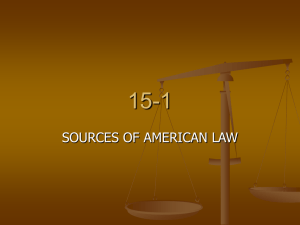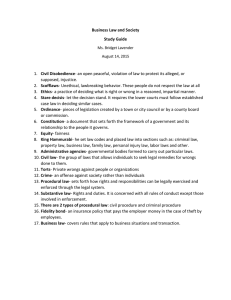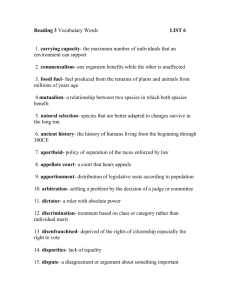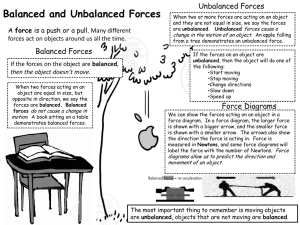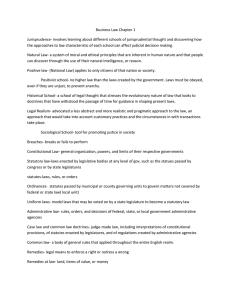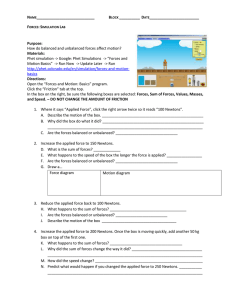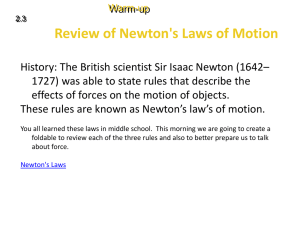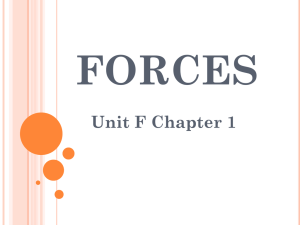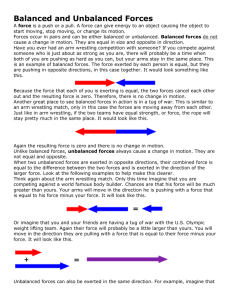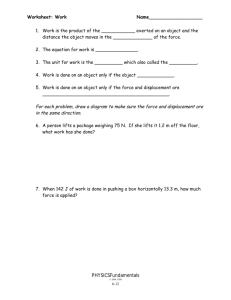Laws of Motion Study Guide Acceleration
advertisement
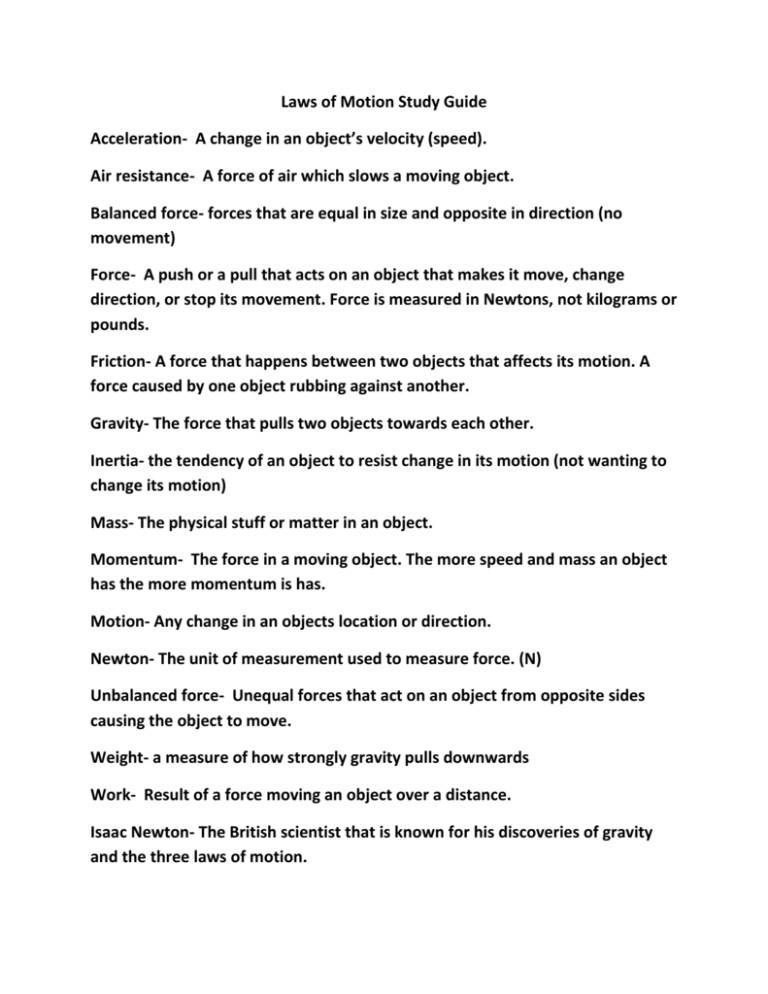
Laws of Motion Study Guide Acceleration- A change in an object’s velocity (speed). Air resistance- A force of air which slows a moving object. Balanced force- forces that are equal in size and opposite in direction (no movement) Force- A push or a pull that acts on an object that makes it move, change direction, or stop its movement. Force is measured in Newtons, not kilograms or pounds. Friction- A force that happens between two objects that affects its motion. A force caused by one object rubbing against another. Gravity- The force that pulls two objects towards each other. Inertia- the tendency of an object to resist change in its motion (not wanting to change its motion) Mass- The physical stuff or matter in an object. Momentum- The force in a moving object. The more speed and mass an object has the more momentum is has. Motion- Any change in an objects location or direction. Newton- The unit of measurement used to measure force. (N) Unbalanced force- Unequal forces that act on an object from opposite sides causing the object to move. Weight- a measure of how strongly gravity pulls downwards Work- Result of a force moving an object over a distance. Isaac Newton- The British scientist that is known for his discoveries of gravity and the three laws of motion. Newton’s Three Laws of Motion: 1. First Law- (Law of Inertia) An object at rest will stay at rest and an object in motion will stay in motion until acted on by an outside force. 2. Second Law- An object’s acceleration depends on its’ mass and the force acting on it. 3. Third Law- For every force (action), there is an equal and opposite reaction force. **Be able to determine whether something is a balanced or unbalanced force. Example: Two football players that are the same size tackling (pushing against) each other and not moving forward or backward. (Balanced force) A group of people playing tug of war with one side pulls the other side forward. (Unbalance force) **Be able to give an example of motion and the force causing it: describe the motion (straight lines, curved, or vibrate), identify the force that causes the motion Example: Basketballs bounce up and down and sometimes fly through the air in a curved path. I provide the force for dribbling, passing, or shooting. Example: A cell phone vibrates back and forth when it rings. A small device inside it shakes, providing the force to make the whole phone vibrate. **Be able to identify the difference between mass and weight. **Be able to identify the measurement of force (Newtons) and the tool used to measure force (Spring Scale)
